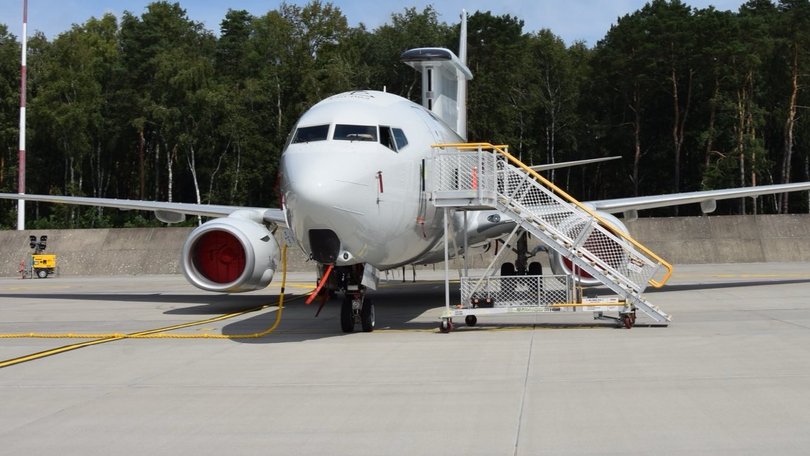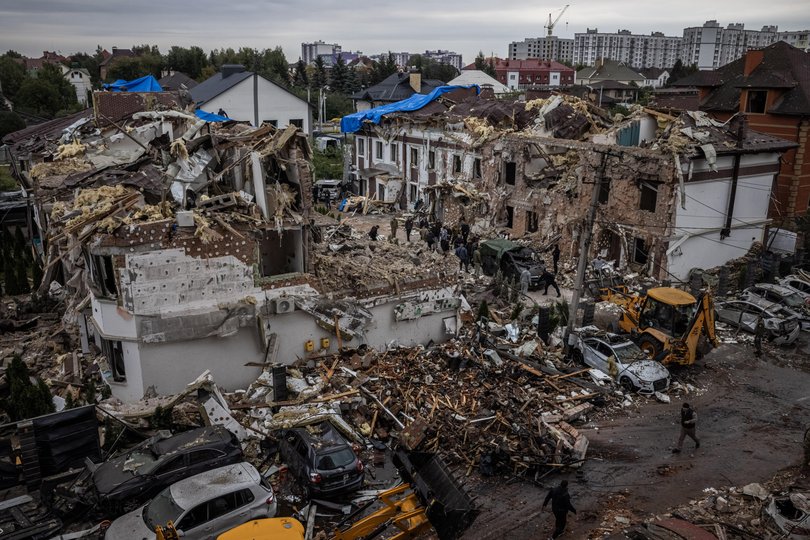Australia’s covert plane response to Russian drone attack on Ukraine

The Defence Department is refusing to discuss any details, but over the weekend one of Australia’s most sophisticated military surveillance planes took charge of NATO’s response to a series of devastating Russian drone and missile strikes against Ukraine.
At least four people, including a 12-year-old girl were killed during the Russian onslaught, and more than a dozen were injured, in a bombardment which centred on the capital Kyiv and surrounding region.
Nearly 600 drones and more than 40 cruise missiles were launched by Russia’s military in what has been described as one of the heaviest attacks by Moscow since it began its invasion in 2022.
Sign up to The Nightly's newsletters.
Get the first look at the digital newspaper, curated daily stories and breaking headlines delivered to your inbox.
By continuing you agree to our Terms and Privacy Policy.During the 12-hour long onslaught a high-tech Royal Australian Air Force E-7A Wedgetail stationed at the Lask airbase in Poland, pictured inset, was dispatched eastwards towards the Ukrainian border to provide essential surveillance and coordination.
The early warning and control aircraft with up to 12 Australian crew on board flew at around 15,000 feet during its NATO mission and was joined by an air-to-air refuelling plane which was deployed from a German airbase in Cologne.
Australia’s E-7A Wedgetail is equipped with a world-beating MESA radar which can see over 300km, offering advanced warning of Russian drone, missile and aircraft incursions into Ukrainian airspace.

Last month Poland’s Minister for National Defence Władysław Kosiniak-Kamysz explained that the Australian E-7A Wedgetail would be supporting NATO activities by protecting airspace and coordinating air operations on the Alliance’s eastern flank.
Sources in Ukraine tell The Nightly that since the Trump Administration has begun scaling back American military aid to the war-torn country, Australia’s world-leading E-7A surveillance support has come at a crucial time.
“The RAAF’s E-7A Wedgetail flew from Poland toward Ukraine’s border, providing advanced radar coverage and coordinating allied defence,” says Robert Potter, an Australian cyber security expert who is based in Kyiv.
“Why does this matter? Australia invested early and is now filling a critical NATO gap. Our Wedgetail is providing early warning to help Ukrainian civilians stay ahead of Russia’s missile attacks,” the Pentagon contractor explains.
“Though geographically distant, Australia is directly strengthening European security because Russian aggression threatens the rules-based order that underpins Indo-Pacific stability too”.
“The lesson: when middle powers commit to advanced capabilities, they shape coalitions in ways that even major powers cannot always match.”
As well as deploying the E-7A Wedgetail and around 100 ADF support personnel to Poland, Australia has supplied Bushmaster vehicles and Abrams tanks to Ukraine, trained recruits in the UK and delivered humanitarian and financial aid.
Since the outset of Russia’s invasion in February 2022, Australia overall contribution to the war-torn nation has topped $1.5 billion, but the Albanese government was one of the slowest in the world to reopen its embassy in Kyiv.
After almost three years of being forced to work from neighbouring Poland, while their international diplomatic colleagues were gaining valuable insights in Kyiv, Australian diplomats finally returned to their mission in December last year.
Now that Australian officials, including a military attache, are back in Kyiv they are gaining first-hand insights into how Ukraine is conducting modern asymmetric warfare against a powerful enemy.
Ukraine’s battlefields have proven to be a real-life laboratory for the rapid advancement of drone technology, and now the ADF appears to be grasping the urgent need to catch up on the modern warfare lessons being provided.
This view is shared by Ukraine’s ambassador to Canberra, Vasyl Myroshnychenko, who argues that Australia’s cooperation with NATO “is a good way to gain unique experience from the warfare in Europe”.
“It’s good that Australia is deploying its E7-A Wedgetail, and I think this is useful for helping with NATO’s intelligence picture, but this is also very good for the ADF,” he tells The Nightly.
“This is a realistic opportunity to use your world-leading technology and it’s as useful for Australia as it is for us – it’s a win, win for everyone, and you’re gaining unique knowledge”.
The high-profile diplomat says Australia now has a great opportunity to benefit from Ukraine’s innovations in autonomous systems: maritime, ground, and aerial – and suggests his country could soon also help produce lethal drones here.
